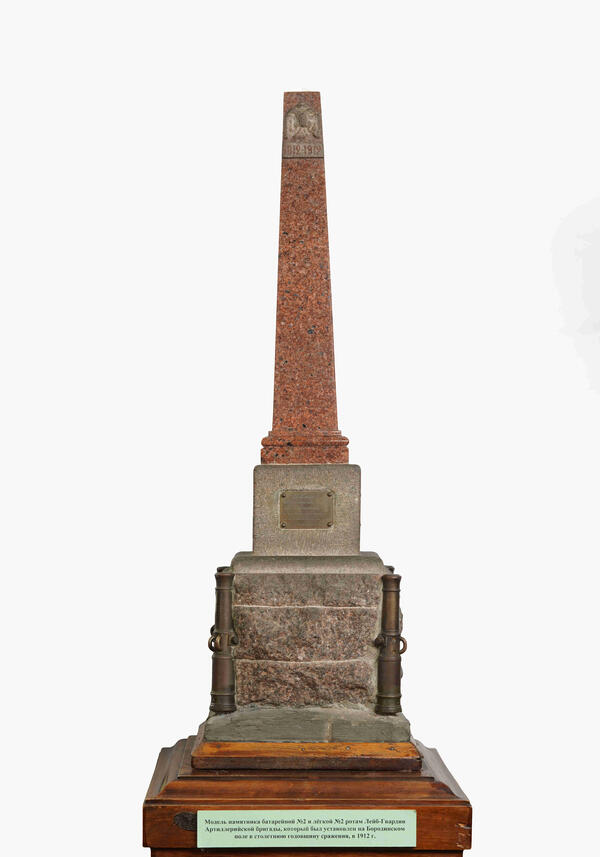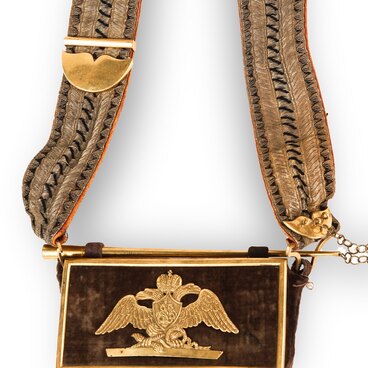The largest battle of the Patriotic War of 1812, the Battle of Borodino, took place on August 26 (September 7). After a brutal 12-hour-long fight, the Russian army retreated, but the French retreated to their original positions as well.
From 6 in the morning, Napoleon’s troops made four attempts to take the Bagration flèches, but each of them was met with a decisive counterattack by the Russian artillery, cavalry and infantry. The main forces of the Russian army were concentrated behind the Semyonovskoye heights, from where they were never forced out.
Later, thanks to the efforts of Margarita Mikhailovna Naryshkina-Tuchkova, the widow of General Alexander Alekseevich Tuchkov IV, a nunnery was built on the site of the Bagration’s flèches and in 1820 a church was erected to eternalize the military glory of the dead.
By 1839, Emperor Nicholas I bought the central lands of the Borodino field, including the Kurgan Heights. A monument was erected at the place where the redoubt of General Nikolay Nikolayevich Raevsky was located. The ashes of General Pyotr Ivanovich Bagration were reburied at its foot. A watchman’s hut was also built there. The veterans who lived in it were obliged to take care of the grave and the monument, as well as to acquaint visitors with this place and the history of the battle.
33 monuments were erected on the Borodino Field to commemorate the centenary of the battle and honor the divisions and regiments of the Russian army. Among them is a monument to the 2nd Battery Company and the 2nd Light Company of the Life Guards Artillery Brigade. It is located on the southern outskirts of the village of Semyonovskoye, near the road to Mozhaysk.
The obelisk is carved from red granite and mounted on a cubic pedestal of pink granite. Cast-iron copies of the barrels of the “unicorns” (that is howitzers) at the corners of the lower tier testify to the role that these guns played in the battle. The memory of the dead is immortalized on cast-iron commemorative plaques.
The upper part of the obverse is crowned with a heraldic bronze eagle as a sign of Russia’s eternal reverence for the feat near Borodino. The dates under the eagle “1812–1912” mark the anniversary of the battle.
The sculptor’s name is unknown. The inscription on the northern side of the obelisk informs about those who contributed to its erection,
From 6 in the morning, Napoleon’s troops made four attempts to take the Bagration flèches, but each of them was met with a decisive counterattack by the Russian artillery, cavalry and infantry. The main forces of the Russian army were concentrated behind the Semyonovskoye heights, from where they were never forced out.
Later, thanks to the efforts of Margarita Mikhailovna Naryshkina-Tuchkova, the widow of General Alexander Alekseevich Tuchkov IV, a nunnery was built on the site of the Bagration’s flèches and in 1820 a church was erected to eternalize the military glory of the dead.
By 1839, Emperor Nicholas I bought the central lands of the Borodino field, including the Kurgan Heights. A monument was erected at the place where the redoubt of General Nikolay Nikolayevich Raevsky was located. The ashes of General Pyotr Ivanovich Bagration were reburied at its foot. A watchman’s hut was also built there. The veterans who lived in it were obliged to take care of the grave and the monument, as well as to acquaint visitors with this place and the history of the battle.
33 monuments were erected on the Borodino Field to commemorate the centenary of the battle and honor the divisions and regiments of the Russian army. Among them is a monument to the 2nd Battery Company and the 2nd Light Company of the Life Guards Artillery Brigade. It is located on the southern outskirts of the village of Semyonovskoye, near the road to Mozhaysk.
The obelisk is carved from red granite and mounted on a cubic pedestal of pink granite. Cast-iron copies of the barrels of the “unicorns” (that is howitzers) at the corners of the lower tier testify to the role that these guns played in the battle. The memory of the dead is immortalized on cast-iron commemorative plaques.
The upper part of the obverse is crowned with a heraldic bronze eagle as a sign of Russia’s eternal reverence for the feat near Borodino. The dates under the eagle “1812–1912” mark the anniversary of the battle.
The sculptor’s name is unknown. The inscription on the northern side of the obelisk informs about those who contributed to its erection,




